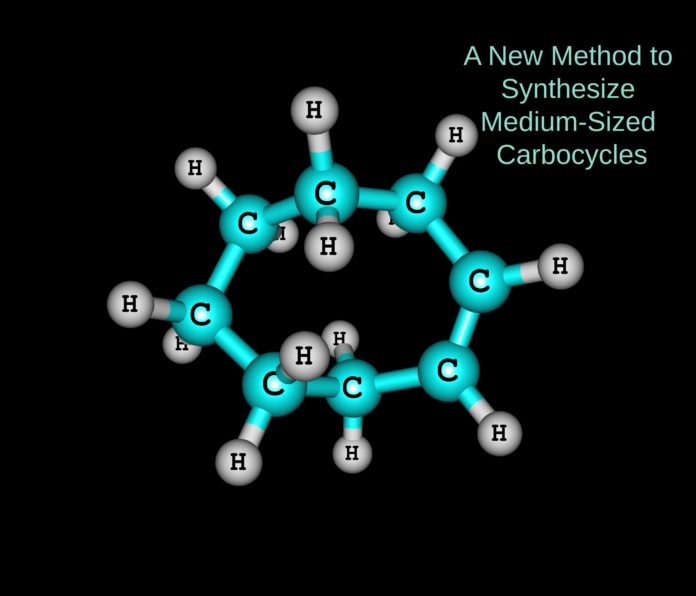Synthesis of Medium-Sized Carbocycles Made Easy by Tokyo University Scientists.
Every chemical compound is composed of a structural skeleton of atoms. The atoms can be removed or added to the structure to synthesize chemical compounds for different uses. Most of the agricultural and pharmaceutical chemicals consist of a multi membered carbon ring called carbocycles as the Skelton.
Making a carbocycle with more than five or six members in the ring is an extremely difficult task. But a group of researchers from the Tokyo University of Agriculture and Technology (TUAT) in Japan has developed an easy method to produce carbocycles up to eight members.
The new method was published in the print edition of Chemical Communications on November 28.
Keiji Mori, author of the paper and associate professor at TUAT, explained how difficult it is to form middle-sized rings. They developed a practical and simple method to produce the middle-sized rings. ie. Seven and eight-membered rings.
Mori, along with co-author Yuna Ottawa used a process called “internal redox process” to make the difficult task, synthesis
of medium-sized carbocycles possible.Carbocycles are made of hydrogen atoms bonded to carbon atoms. The oxidation of carbocycles that involves exchanging and rearranging components weakens the carbon-hydrogen bonds leading to the binding of hydrogen atoms to other carbons. The researchers executed this process in a cyclical manner, causing hydrogen to shift to distal carbon, forming a well-arranged, medium-sized (seven- and eight-membered) carbocycles. The interesting point is that their formation is intensely favored compared to five- or six-membered ring formations, which are more effortless processes.
The synthesis of seven-membered or larger carbocycles was a field of attraction among researchers in chemistry. Scientists had been trying hard to discover a facile method for the synthesis of carbocycle rings with more than six members. Still, most of the techniques required relatively special precautions and dilute conditions to prevent undesired molecular effects, which were not practically feasible.
The new method developed by Mori could be done without any special precautions and undesired molecular interactions.
Mori’s ultimate goal was the development of an effortless method for the synthesis of medium-sized carbocycles, which was difficult to synthesize using conventional methods.

















































